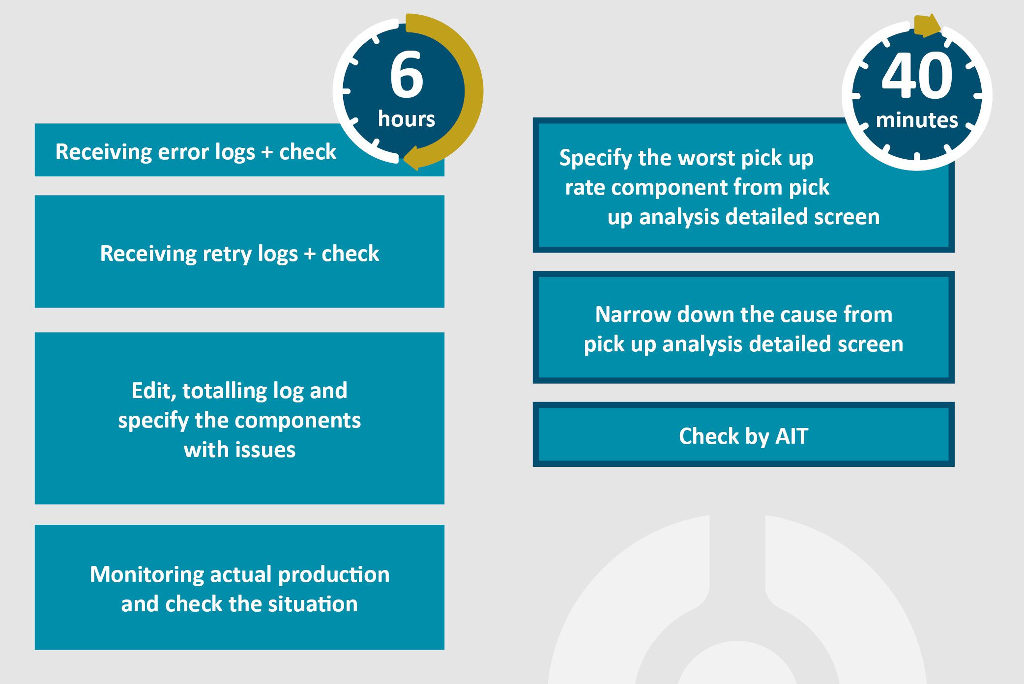Raising productivity with the latest connected factory standards
Bridging the divide between manufacturing equipment and enterprise management, Industry 4.0 technologies enable new factory management tools that help production teams keep processes running smoothly and efficiently
The Industrial Internet of Things (IIoT), as a key enabler for Industry 4.0, is transforming the way data is handled in both the operational (OT) and information (IT) technology domains. It’s driving the emergence of new tools that can enhance high-level planning as well as maintenance and optimization on the factory floor.
Connected factory standards enhance connectivity
IIoT embodies powerful, standardized machine-to-machine communication protocols. In surface-mount electronics manufacturing, these now provide a basis for meaningful communication between automated inline equipment and enterprise-level software like the Manufacturing Execution System (MES) and Enterprise Resource Planning (ERP).
This is a welcome improvement because, historically, a lack of standards has held back the prospects for sophisticated communication between the various types of equipment and systems.

Another benefit is that the changes in the way machines share data also now enable SMT-equipment vendors to enhance the software tools available to production teams working in the factory.
Despite the general trend for greater automation and longer periods of unsupervised production, the complexity of SMT processes and equipment - which require frequent attention to maintain and optimize - means empowering those teams remains important.
Connecting operational & information technology domains
As one of the defining principles of Industry 4.0, connecting an organisation’s OT equipment with its IT systems aims to create a seamless link between factory equipment and the applications that run the business. It enables enterprise software like the MES to automate control of the manufacturing activities, while the data from factory equipment also drives analytical applications that inform business planning and provide the insights needed for continuous improvement.
IIoT technologies now bring standardised protocols and APIs into the mix, like JSON (JavaScript Object Notation) and REST (REpresentational State Transfer) web-based API, that enable factory equipment and IT applications to communicate. Without these standardised platforms, compatibility between equipment and applications is far from plug-and-play, requiring labour-intensive and costly collaboration between different parties’ software development teams.
By taking advantage of these protocols, equipment and applications can now share data through a relatively simple communication relay interface. The equipment manufacturer can create and maintain this interface without needing to customise it to enable communication with specific individual IT applications.
One example is YSUP-LINK, which is a part of Yamaha’s YSUP production support system. It uses REST to allow surface-mount equipment like a YSP10 automated printer and the latest YRM20 mounters in a production line to be connected to various third-party MES or other Industry 4.0 applications. It also handles controlling and collecting information from equipment in the production line and connects to intelligent component storage, as well as supporting the possibility to connect with third-party equipment and software in the future.

Effectively, it provides a connectivity package that enables equipment in the factory to send status information to the MES, which enables the MES to monitor and manage manufacturing activities automatically (figure 1).
 Figure 1 | The YSUP-LINK provides the connectivity needed for an MES to manage manufacturing automatically.
Figure 1 | The YSUP-LINK provides the connectivity needed for an MES to manage manufacturing automatically.Multiple instances of machines such as the YRM20 can connect simultaneously into this environment, enabling YSUP-LINK to send reports to the MES, such as live status updates about the materials being used at each machine, or splicing reports when reels are changed.
Enriching operational technology communications
Yamaha’s production support system also includes a material information system, YSUP-MI, which centralizes management of material information and makes this available to factory software tools for activities such as line monitoring and setup verification/navigation. This delivers advantages for production teams, such as accelerated response to operator requests for information about reels, and also enables faster data backup execution. Management is centralized thanks to real-time synchronization between the material information system and enterprise IT systems.

Figure 2 | Problem solving based on traditional error logs (left) and new Dashboard analysis (right).
In addition, the YSUP software provides a live dashboard that delivers enhanced analysis to assist with real-time optimization and troubleshooting. This tool includes analytical functions such as print-results analysis, placement-misalignment analysis, vision process support, loss cost aggregation, and enhanced reporting that support maintenance activities and help improve productivity.
There is also component-pickup analysis, which helps find and remedy the causes of common assembly defects. This has already delivered remarkable successes for some clients. By simultaneously visualizing the rates of pickup errors per feeder and per head, the dashboard helped the team track down a pickup problem to an issue with splicing tape that could have taken about 6 hours to identify using traditional tools. Figure 2 compares the diagnostic processes of both approaches, showing how the dashboard cut the time for solving the problem to about 40 minutes.
Similarly, another client has taken advantage of the dashboard information to prevent over 100,000 pickup errors every month, potentially saving between $12,000 and $120,000 per year in component losses.
Conclusion
IIoT technologies are enabling sophisticated plug-and-play communication between surface-mount equipment, factory software tools, and enterprise-level IT. On the one hand, this provides the long-awaited bridge between companies’ IT and OT domains, to automate production management and boost efficiency.
On the other, it is providing the basis for enhanced factory software tools that increase visibility for equipment operators and accelerate troubleshooting and process optimisation to maximise productivity.
Raising productivity with the latest connected factory standards